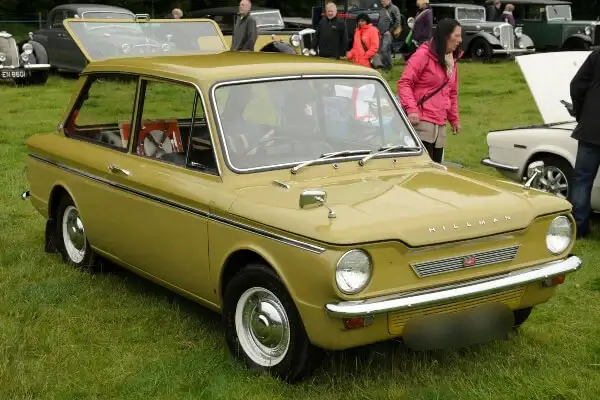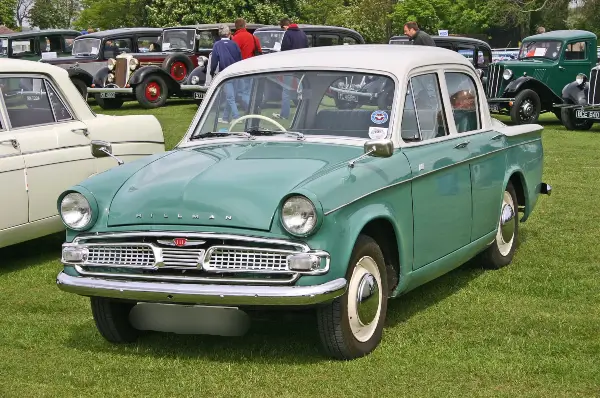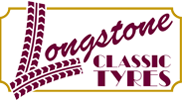Hillman Tyres

Classic Hillman Tyres
On the following pages, Longstone Classic Tyres give classic tyre fitment recommendations for Hillman cars.
If your Hillman is not listed, don't panic! Please give us a call on:
01302 711 123
or
Email: sales@longstonetyres.co.uk
Vintage Hillman Tyres
Whether you drive an Imp, Avenger or any of the Hillman range, we have your tyres needs covered at Longstone Classic Tyres.
Hillman Tyres
The following list are our recommendations for your Hillman:
- 155 R 12 Nankang for a Hillman Husky, Imp & Chamois
- 155 HR 13 Michelin XAS FF for a Hillman Avenger
- 165 HR 13 Michelin XAS FF for a Hillman Hunter, Minx IV, V, VI & Super Minx
- 155 HR 15 PIRELLI CINTURATO CA67 for a Hillman series Minx (1955-1963)
Hillman History
Josiah Turner and James Starley founded the Coventry Sewing Machine Company in 1857 and hired competent engineers from the London region, one of which being William Hillman. In 1869, the company renamed itself the Coventry Machinists Company and, like many other firms in the region, began making velocipedes. Hillman and Starley developed the "Ariel" bicycle in 1870, and by 1885, Hillman was a partner in the bicycle business Hillman Herbert and Cooper, manufacturing the Kangaroo.

Hillman's new firm quickly became successful, and he was a millionaire before the turn of the century. With cash came the means to realise Hillman's next aim, which was to become a car manufacturer. Hillman had moved into Abingdon House in Stoke Aldermoor, near Coventry, with the intention of establishing a vehicle manufacturing on its grounds. William Hillman formed Hillman-Coatalen in 1907, with Breton Louis Coatalen as a designer and principal engineer. They debuted the 24HP Hillman-Coatalen, which was entered in the Tourist Trophy that year. A crash forced the vehicle out of the race, but it created a splash. Coatalen departed to join Sunbeam in 1909, and the firm was renamed Hillman Motor Car Company in 1910.
The early automobiles were big, with a 9.76-litre 6-cylinder engine or a 6.4-litre four-cylinder engine. The 9 hp of 1913, with a 1357 cc side-valve four-cylinder engine, was the first to sell in large numbers and was reintroduced after the First World War as the 11 hp, with a 1600 cc engine. The 14 horsepower model, debuted in 1925 and the only type built until 1928, was a huge seller. Following the style of the period, a Straight Eight of 2.6 litres and Hillman's first use of overhead valves were introduced in 1928, but it quickly earned a reputation for big-end troubles.
Hillman was taken up by the Rootes brothers in 1928 and later amalgamated with Humber. In 1931, the Rootes brothers received further funding from Prudential Assurance, increasing their stake in Humber to 60%. Hillman was then gradually transitioned to compact vehicle manufacture and became the most well-known brand within the Rootes empire, alongside Humber, Sunbeam, and, in the Rootes Group's last decade, Singer.
The 1930s saw a return to side valves, with a 6-cylinder Wizard first constructed in April 1931 and, in 1932, the first automobile to bear the Minx moniker, inspired by the Rootes brothers. This possessed an 1185 cc four-cylinder engine and went through a succession of body shape and manufacturing changes until the end of WWII. The Hillman Wizard "65" and "75" were superseded in 1934 by the 2110 cc Hillman "16 hp" and 2810 cc "20/70" which lasted until 1936, when a new body design, the 2576 cc Hillman "Sixteen" and the 3181 cc "Hawk" and "80" with side valve straight-six engines, was launched. These latter vehicles were also marketed as Humbers.
The Minx was resurrected after the war with the same 1185 cc engine. It went through a series of versions designated by Phase numbers, with Phase VIII of 1955 seeing the introduction of an overhead-valve engine 1390cc known as the Mk 8. The later 1956 Two-Tone version of this model, the Mark 8A, was dubbed the "Gay Look" and the advertising slogan "As Gay as a Mardi Gras" was coined. For 1954, a smaller car, the Husky, with a van-like body and the original side-valve engine, was also introduced. The floor pan of this type was eventually used as the foundation for the Sunbeam Alpine, which was also part of the Rootes empire.
The Hillman Imp, constructed at a new facility in Linwood, Scotland, was a radical departure in 1963, employing a Coventry Climax all-alloy, 875 cc rear engine. The location was picked with the help of the government in order to provide jobs to a disadvantaged area. There was also a fastback variant, the Californian, and an estate with the Husky name. In 1966, a new automobile named the Hunter was released, followed by a smaller-engined conventional variant called the Minx in 1967. The factory code "Arrow" is commonly assigned to them, however, this moniker was never formally used in marketing.
By 1967, Chrysler had gained entire ownership of Rootes, and the first new Hillman model backed by the American conglomerate was the Avenger of 1970. Until 1979, when Chrysler sold its European subsidiary to Peugeot, the Avenger and Hunter lines were rebadged as Chryslers. Hunter manufacture was halted at this point, and the Avenger was rebadged as a Talbot until it was pulled from the market at the end of 1981. Hillman's Ryton plant, which built numerous Peugeot models for the European market, closed in 2007. The Hillman name is still owned by the French firm.
